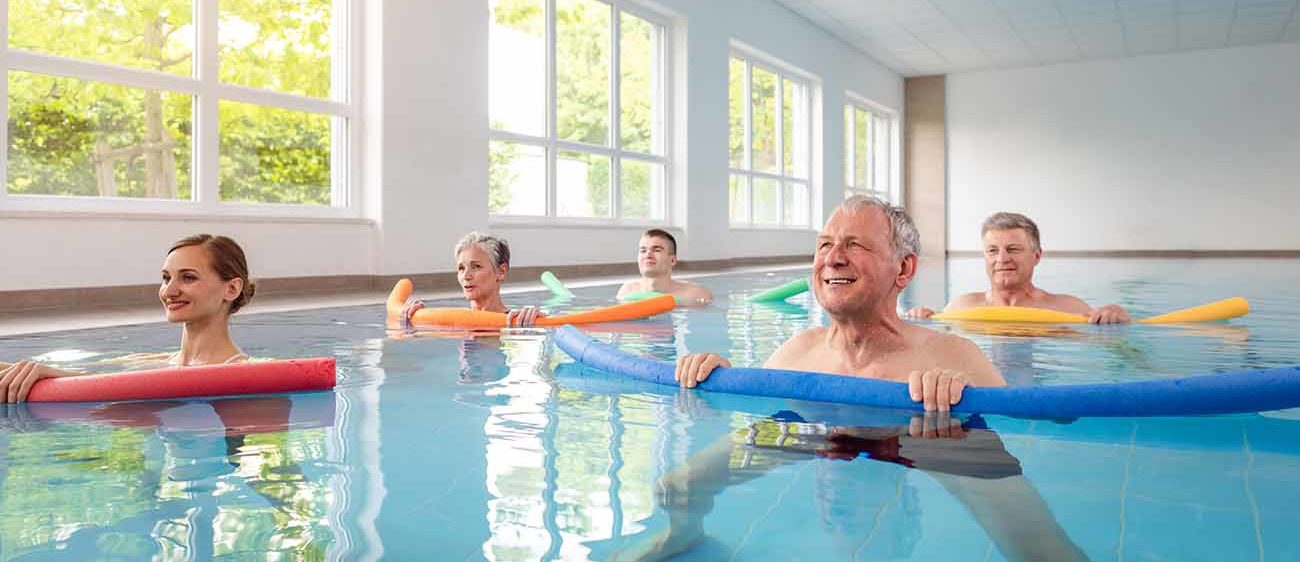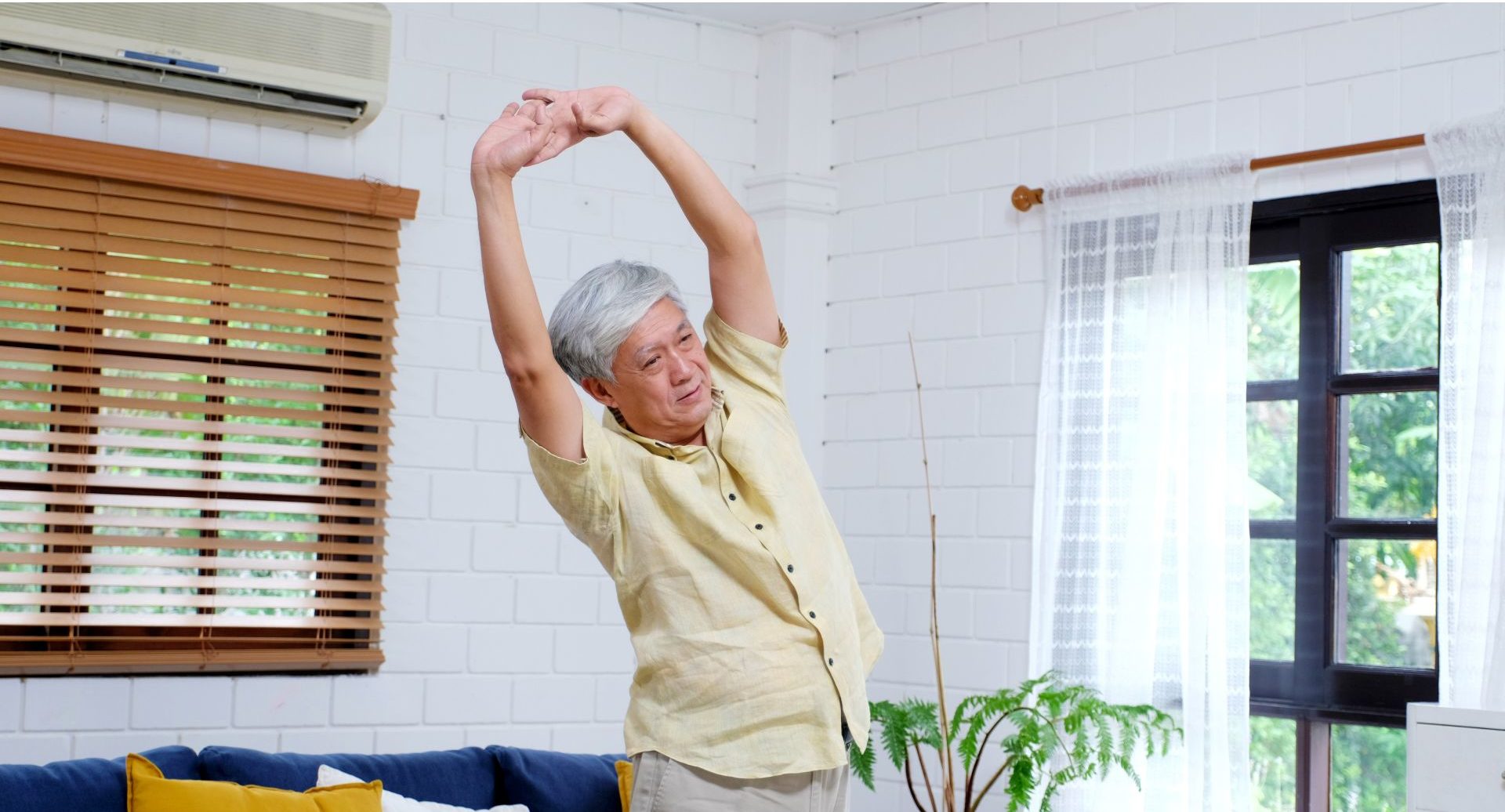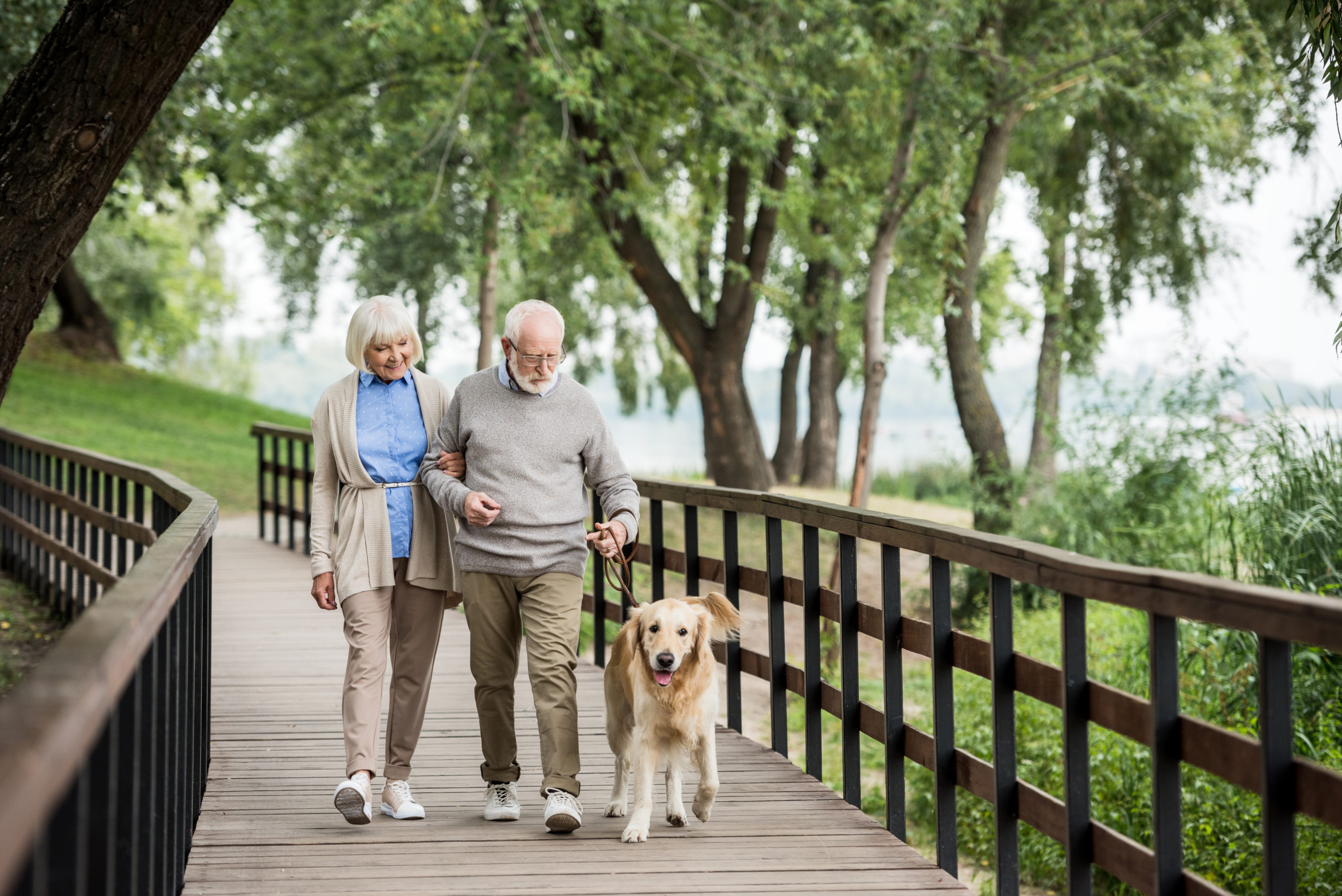A regular exercise routine is something that becomes increasingly important with age, but many people become more inactive as they get older. Aging adults who engage in regular exercise are both physically and mentally healthier, and finding the right exercises for older adults is key to keeping yourself motivated and having fun. While exercise benefits everyone, the greatest benefits come to those aging in place, increasing your independence and reducing the chances of disability and falls.
The Center for Disease Control recommends that adults 65 and older find an exercise routine that includes aerobic exercise, strength training, and balance/mobility training on a weekly basis. For aerobic exercise they suggest 150 minutes of moderate-intensity activity, 75 minutes of high-intensity activity, or some combination of the two. Those activities should be spread throughout the week, such as 5 30-minute sessions of walking. Along with that, there should be 2 days of muscle-strength training and 3 days that include balance activities such as standing on one foot.
Benefits of Exercise for Older Adults
A regular exercise routine can play a key role in preventing physical and mental illnesses. A consistent, multi-faceted exercise routine like the one suggested by the CDC above not only reduces the chances of Alzheimer’s and dementia by 50%, but can also help fight and prevent other long-term conditions like osteoporosis and diabetes. Some of the biggest benefits of a regular exercise routine come to those at risk for or experiencing heart disease. Exercise can reduce the chances of developing hypertension, and help mitigate the symptoms for those already experiencing it.
Those aging in place can see even greater benefits to a regular fitness routine, increasing your ability to stay independent with age. Researchers at Harvard have done multiple studies on how exercise can help aging adults stay independent, finding that regular exercise reduced the likelihood of permanent disability by 28%, and temporary disability by 18% over a 2.5-year period. They also found that regular exercise reduced the chances of falls by 23%. Keeping a regular routine can also help those aging in place to stay mentally healthier, giving them a routine and motivation to continue improving their fitness.
Important Factors to Consider
1. What is an appropriate level of activity for my loved one?
Working with your loved one’s doctor can be a great way to determine an appropriate level of activity for them. Some higher-intensity exercises such as jogging may need to be avoided, however there are many suitable replacements such as swimming which place a lower demand on the body. Starting with a lower-intensity such as walking or chair yoga, and slowly increasing from there can also be a good way to determine an appropriate level of intensity. Discussing with a physician is always recommended if you have any concerns about which are safe exercises for older adults.
2. Can my loved one conveniently go to a gym or fitness center?
Finding consistent methods of transportation can be an issue for some older adults. If your loved one can easily access a gym, many pieces of equipment will already be available there, such as treadmills, ellipticals, etc. so it would be better to focus on smaller items to complement those they have access to at the gym. If your loved one isn’t able to easily go to a gym or fitness center, it may be worth investing in a larger piece of home gym equipment such as a treadmill or “all-in-one” fitness machine with multiple types of exercise. While these may be expensive short-term, the health benefits of a convenient form of exercise such as these can pay off in the long-term.
Exercises for Older Adults

Aerobic Exercises
Aerobic exercises improve cardiovascular conditioning, and can be as low or high intensity as someone needs.

Strength Training
Strength training improves your muscular strength and endurance, reducing your chances of falls or disability.

Flexibility Training
Flexibility training can help you relax while improving your range of motion.

Aerobic Exercises
Aerobic exercises improve cardiovascular conditioning, and can be as low or high intensity as someone needs.

Strength Training
Strength training improves your muscular strength and endurance, reducing your chances of falls or disability.

Flexibility Training
Flexibility training can help you relax while improving your range of motion.
Exercise Equipment for Older Adults

Aerobic/Cardio
Having the right equipment can make cardio much safer and more convenient, especially in-home.

Strength-Building
Different equipment will greatly improve the amount of strength-guiding exercises at your disposal.

Home Gym
Investing in a home gym can make sticking to a regular exercise routine much more convenient.

Aerobic/Cardio
Having the right equipment can make cardio much safer and more convenient, especially in-home.

Strength-Building
Different equipment will greatly improve the amount of strength-guiding exercises at your disposal.

Home Gym
Investing in a home gym can make sticking to a regular exercise routine much more convenient.
More Exercise Articles

Exercises for Seniors
A few suggested exercises for seniors, appropriate for various levels of mobility.

Keeping Fit At Home
Finding a routine for loved ones can be hard. Learn strategies to help a loved one stay fit without leaving the home.

Social Walking
Walking can be a great form of exercise, but also a convenient and enjoyable social activity for many older adults.

Exercises for Older Adults
A few suggested exercises for older adults, appropriate for various levels of mobility.

Keeping Fit At Home
Finding a routine for loved ones can be hard. Learn strategies to help a loved one stay fit without leaving the home.

Social Walking
Walking can be a great form of exercise, but also a convenient and enjoyable social activity for many older adults.




Leave a Reply